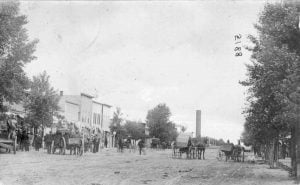Establishing a New County called Brown County, Nebraska
In December, 1882, Frank Sellors and Merritt Griffiths circulated a petition asking that the coming legislature pass an act establishing a new county from unorganized territory lying west of Holt county. The boundaries as set forth in the petition included what is now the three counties, Brown, Rock and Keya Paha, and was a tract forty-eight miles from east to west and sixty-four miles north and -south. It had been under the jurisdiction of Holt County for some years. Two bills defining the boundaries of Brown County were introduced; one in the senate by Moses P. Kinkaid of the twelfth … Read more

